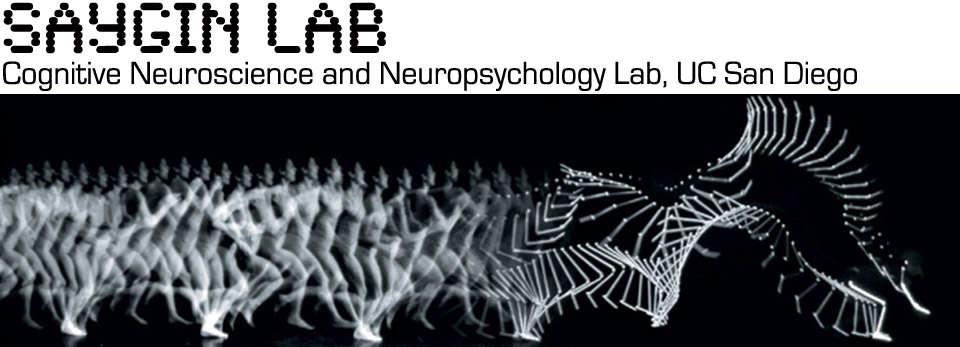Artificial agents such as humanoid robots and 3D animated characters are rapidly entering our lives and becoming social partners in education, healthcare, entertainment, retail, and defense. Combining approaches from artificial intelligence, social perception, and cognitive neuroscience, our lab explores how humans perceive and interact with artificial agents.
The Uncanny Valley (UV) hypothesis concerns the design of artificial agents, and posits that the degree of humanlikeness of an agent has a complex relationship to the reaction of humans to the agent. Whereas increased humanlike qualities tend to lead to increased acceptability up to a point, agents that are highly similar to humans but not quite the same can instead cause a negative response. Better understanding, characterization and measurement of the UV is of practical interest as it can pose a challenge to the development of interactive, social artificial agents that are well accepted by humans. The UV is of broader interest to our research however, as it can act as a window onto human perception and social cognition. Our lab has been one of the primary contributors to the small but growing literature exploring perceptual, cognitive and neural underpinnings of the UV.
Our interest in this research area is far from limited to the Uncanny Valley, and more broadly concerns human social cognition and human-agent interaction. Our approach is interdisciplinary and cross-methodology. Our goal is on the one hand to improve our understanding of human perception and social cognition, and on the other, to guide the design, development and evaluation of artificial agents that are well designed for their uses and adapted to the brains of their creators.
Selected media coverage
- UCSD Press Release
- CNN Story
- San Diego Union Tribune Cover Story
- Calit2 Story
- Wired
- boing boing
- Science Daily
See also: Public Engagement and Media
Selected papers/presentations
- ^Hofree, G., ^Urgen, B.A., Winkielman, P., Saygin, A.P. (2015). Observation and imitation of actions performed by humans, androids, and robots: an EMG study. Frontiers in Human Neuroscience, 9 :364. doi:10.3389/fnhum.2015.00364. ^: Joint first authors HTML
- Li, A.X., Florendo, M., Miller, L.M., Saygin, A.P. (2015) Robot form and motion influences social attention. 10th ACM/IEEE International Conference on Human-Robot Interaction (HRI 2015). [23% acceptance rate] HTML/PDF @ ACM Digital Library PDF
- Urgen, B.A., Li, A.X., Berka, C., Kutas., M., Ishiguro, H., Saygin, A.P. (2015) Predictive coding and the Uncanny Valley Hypothesis: Evidence from electrical brain activity. Cognition: A Bridge between Robotics and Interaction, 10th ACM/IEEE International Conference on Human-Robot Interaction (HRI), March 2015, Portland, OR.
- Leonardis, E.J., Saygin, A.P. (2015) Humanoid robots and the social brain: Ethical implications. The Emerging Policy and Ethics of Human-Robot Interaction, 10th ACM/IEEE International Conference on Human-Robot Interaction (HRI), March 2015, Portland, OR.
- Urgen, B.A., Plank, M., Ishiguro, H., Poizner, H., Saygin, A.P. (2013) EEG Theta and Mu oscillations during perception of human and robot actions. Frontiers in Neurorobotics, 7:19. doi:10.3389/fnbot.2013.00019. HTML PDF
- Saygin, A.P., Chaminade, T., Ishiguro, H., Driver, J., Frith, C. (2012) The thing that should not be: Predictive coding and the uncanny valley in perceiving human and humanoid robot actions. Social Cognitive and Affective Neuroscience, 7(4):413-22; PMID: 21515639. PDF
- Saygin, A.P., Stadler. W. (2012) The role of visual appearance in action prediction. Psychological Research, 76(4): 388-94; PMID: 22371203. PDF
- Saygin, A.P. (2012) What can the brain tell us about interactions with artificial agents and vice versa? Workshop on Teleoperated Androids, 34th Annual Conference of the Cognitive Science Society. Sapporo, Japan. PDF
- Saygin, A.P., Urgen, B., Plank, M., Chaminade, T., Kilner, J., Driver, J., Poizner, H., Kutas, M., Frith, C., Ishiguro, H. (2012) The visual processing of body movements studied with natural and artificial agents. Nano-symposum, Annual Meeting of the Society for Neuroscience, New Orleans, LA, USA.
- Urgen, B.A., Plank, M., Ishiguro, H., Poizner, H., Saygin, A.P. (2012) Temporal dynamics of action perception: The role of biological appearance and motion kinematics. 34th Annual Conference of the Cognitive Science Society, Sapporo, Japan.
- Urgen, B.A., Plank, M., Kutas, M, Poizner, H., Saygin, A.P. (2012) ERP signatures associated with biological form and biological motion processing during action perception. Annual Meeting of Cognitive Neuroscience Society, Chicago, IL, USA.
- Saygin, A.P., Chaminade, T., Urgen, B.A., Ishiguro, H. (2011) Cognitive neuroscience and robotics: A mutually beneficial joining of forces. Human-robot interaction: Perspectives and contributions to robotics from the human sciences, Robotics: Science and Systems (RSS), Los Angeles, CA.
- Chaminade T., Ishiguro H. &, Saygin A.P. (2010) An fMRI investigation of the Uncanny Valley. Workshop on Robot Morphology, Human Robot Interaction (HRI), Osaka, Japan.
Supported by: DARPA, Hellman Foundation Fellowship, Kavli Institute for Brain and Mind, Qualcomm Institute (Calit2),

